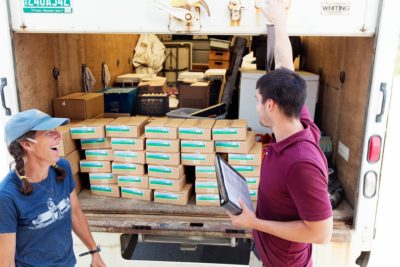Vermont’s workforce dilemma
November 14, 2017

Vermont’s struggle to grow its workforce weakens our economy, inhibits the ability for Vermont businesses to expand their operations, and threatens the ability for Vermonters and future generations to grow and thrive here in the Green Mountains. An aging workforce, stagnant wages in jobs without career ladders, the cost of housing and childcare, the opioid epidemic, and a need for more young adults entering the workforce are all contributors to our workforce dilemma.
According to a 2013 Vermont Food System Workforce Needs Assessment report, 40 percent of large employers and 50 percent of small employers surveyed said that hiring challenges are holding their businesses back—meaning they are faced with reduced revenue, less efficient production, and delayed expansion plans into new markets or larger production spaces. Four years later, the challenges have only increased.
The simple demographic fact is that more people are retiring and fewer people are entering the workforce each year. According to a report from the Vermont Futures Project released in January 2017, 11,375 Vermonters retire every year, and only 8,000 young people are entering Vermont’s workforce from either high school or college. Frankly, we need more people in Vermont or these negative trends will continue and we will not be able to afford to sustain the traditions that make Vermont such a special place to live.
There is also a widely-held perception that Vermont lacks sufficient opportunities for job seekers in general, and thus many young people leave the state for more or better opportunities elsewhere.
Yet, in the Vermont Farm to Plate Network’s efforts to strengthen economic development in the food system, we often hear from local food producers and businesses that the biggest challenge to growing their business is finding labor. Farmers, producers, and distributors cannot find the local people they need to drive trucks, harvest vegetables, process meat, milk cows, or manage poultry and livestock. These jobs are available, but Vermonters often do not apply because they are under the impression that these are low-wage jobs with no opportunity for career advancement. The honest truth is that not as many Vermonters want to do hard physical labor anymore, which begs the question—who will do this needed work?
Some who do apply, do not get hired or are not able to keep the job because they lack the necessary skills or struggle with drug and alcohol dependence. We’ve also heard that farmers and food producers cannot find enough workers with basic skills such as timeliness, accountability, and a work ethic.
Jobs that are typically hard to fill in the local food economy include truck drivers, product operations managers, shipping and receiving, and general labor like hand-weeding and working the packing line—especially during the harvest season. There is also a need for skilled meat cutters, cheese makers, HVAC installers, food safety inspectors, and experienced managers.
In addition, too few businesses in Vermont, employ human resources professionals to work with owners to develop a compensation philosophy and workforce development and training processes. Often employees need additional on-the-job training before they can be fully productive, which can be challenging for employers to provide.
In some cases these jobs cannot be filled because of low wages, but not always. Wages in the local food economy are competitive and often above the state’s $10 minimum wage. Farmers and producers often pay anywhere from $12.38 to $17 per hour, with annual salaries of $50,000+ for professional employees in higher level positions. The range of jobs in our food system varies widely. There are jobs in quality assurance, marketing and brand development, accounting, information technology, shipping and receiving in a farm or food business setting, and other professional positions just as there would be in other industries.
So, when we talk about Vermont’s workforce, it’s important to remember that this is a complex issue. It’s not a simple argument about having enough jobs, paying good wages, or Vermont’s aging population. The Vermont food economy has plenty of jobs available. These jobs—much to people’s surprise—offer decent wages, quality of life, and an opportunity to be part of a growing sector of Vermont’s economy. The jobs are there, and the local economy needs hardworking, skilled people to fill them.
Learn more about the work taking place to implement Vermont’s Farm to Plate food system plan at www.vtfarmtoplate.com.




